IMC Unit 2
1/582
There's no tags or description
Looks like no tags are added yet.
Name | Mastery | Learn | Test | Matching | Spaced |
|---|
No study sessions yet.
583 Terms
What's primary data
Data collected BY AN INVESTIGATOR with a SPECIFIC PROJECT in mind
What's Secondary data
Data collected BY SOMEONE ELSE for some other purpose
What's a population
All members of a defined group
What's a Sample
A subset of a population
What are the types of sample
Random - each member of the population has an EQUAL
CHANCE of being selected); and
Non random – a selection criteria is used
What's Discrete Data
Can only take certain values
What's Continuous Data
Can take any value
How are Discrete Data and Continuous Data collected
Discrete data is COUNTED
Continuous data is MEASURE
What are the different measures of Central Tendency
Arithmetic Mean
Median
Mode
What does Geometric Mean calculate
Calculates the ‘average rate of change’
What is the formula for Geometric Mean

What are measures of dispersion
• Standard deviation
• Range
• Interquartile range
• Percentile
What is standard deviation
Measures the VARIABILITY of a data set AROUND THE MEAN
What is step 1 of calculating Standard Deviation (of a Data Set)

What is step 2 of calculating Standard Deviation (of a Data Set)
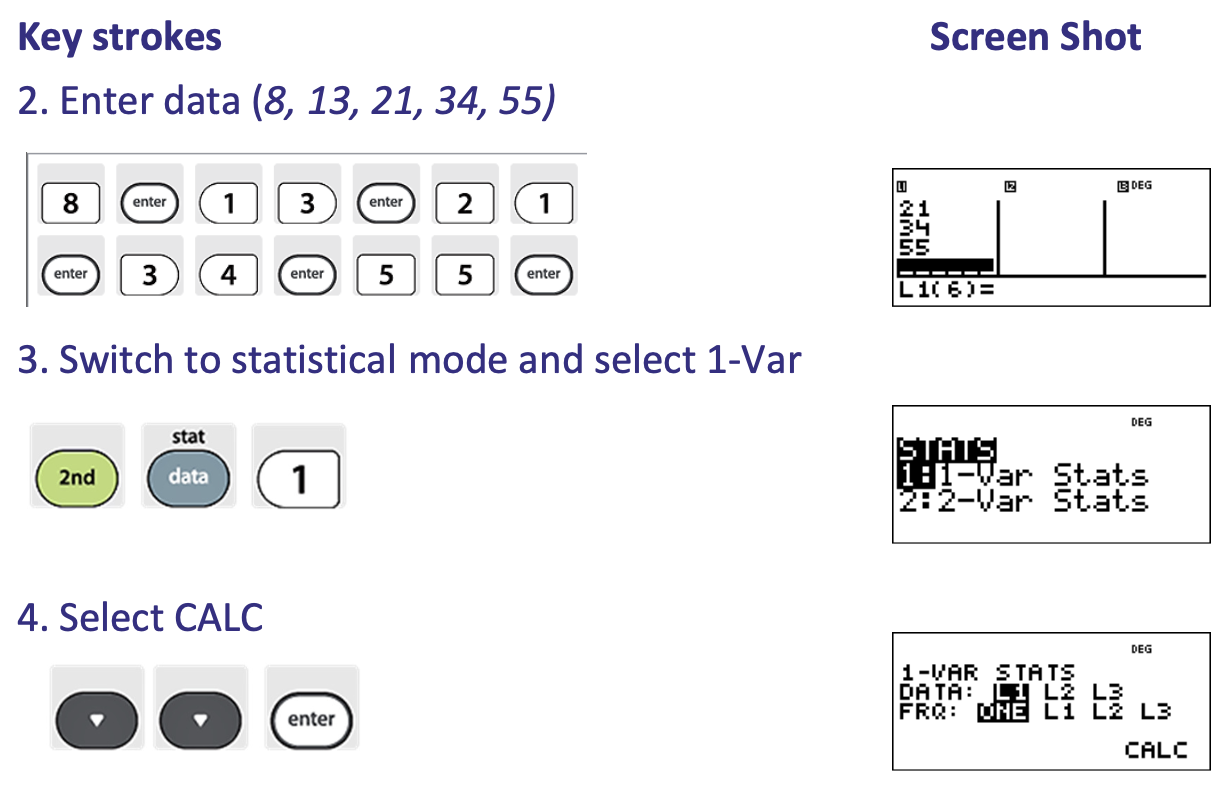
What is step 3 of calculating Standard Deviation (of a Data Set)
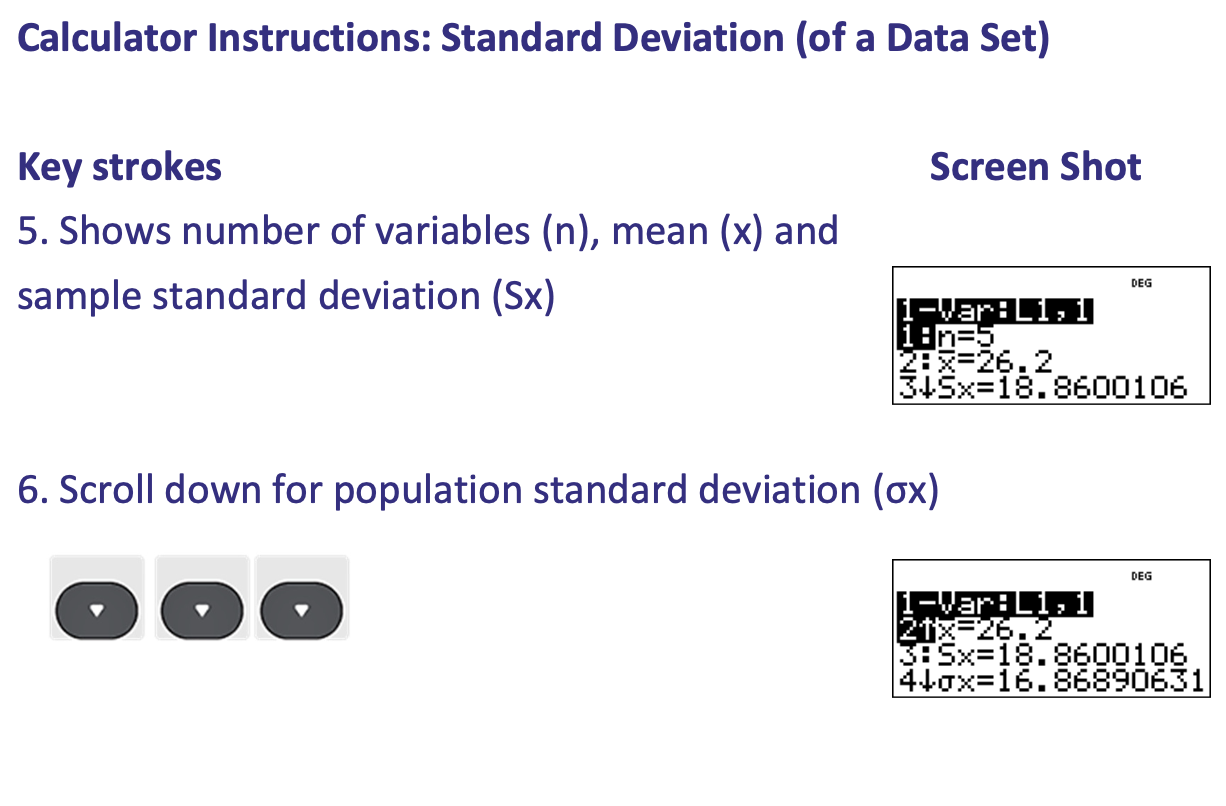
What is step 1 of calculating Standard Deviation (of a Frequency Distribution)
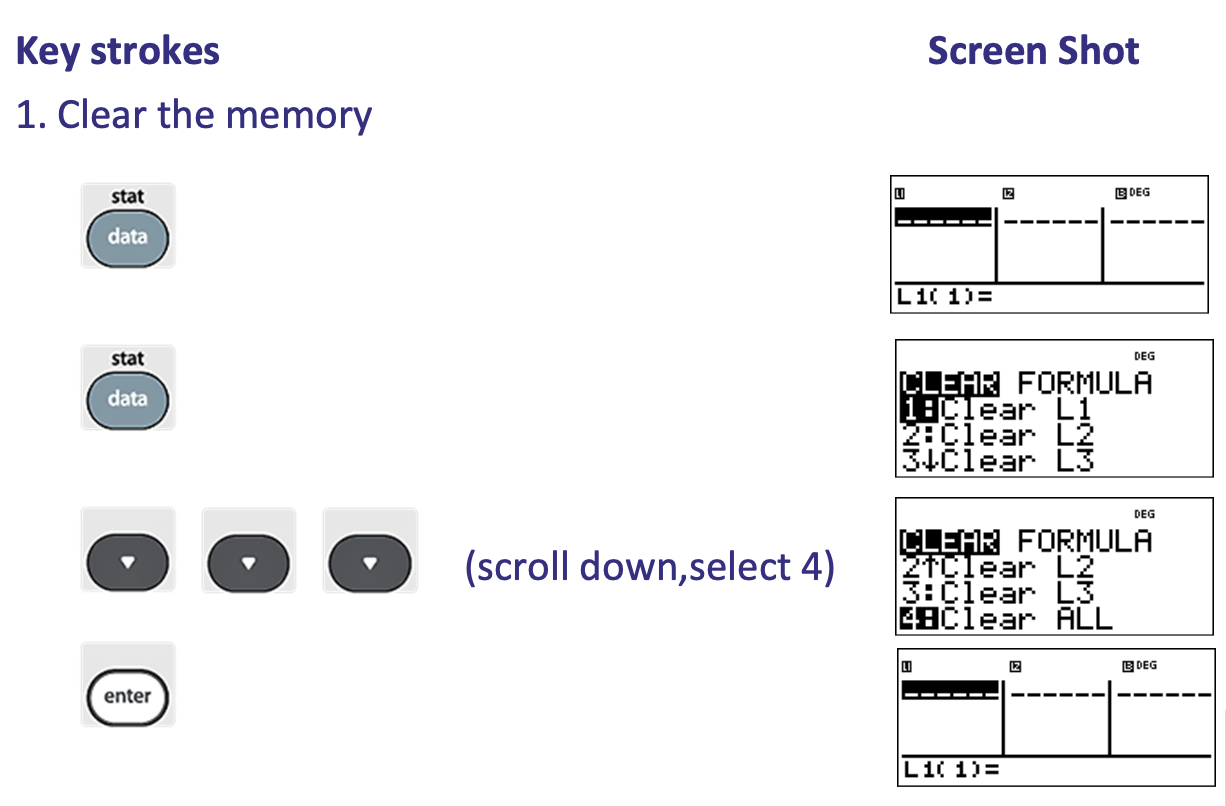
What is step 2 of calculating Standard Deviation (of a Frequency Distribution)
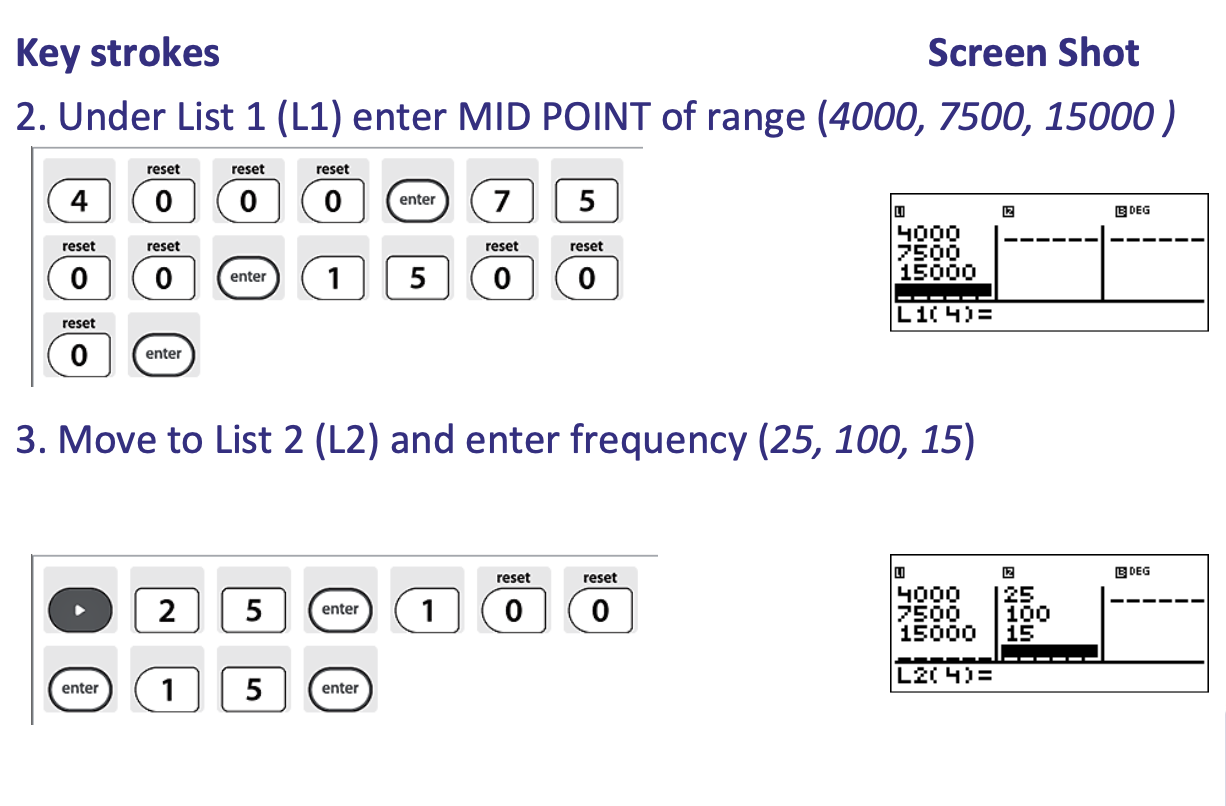
What is step 3 of calculating Standard Deviation (of a Frequency Distribution)
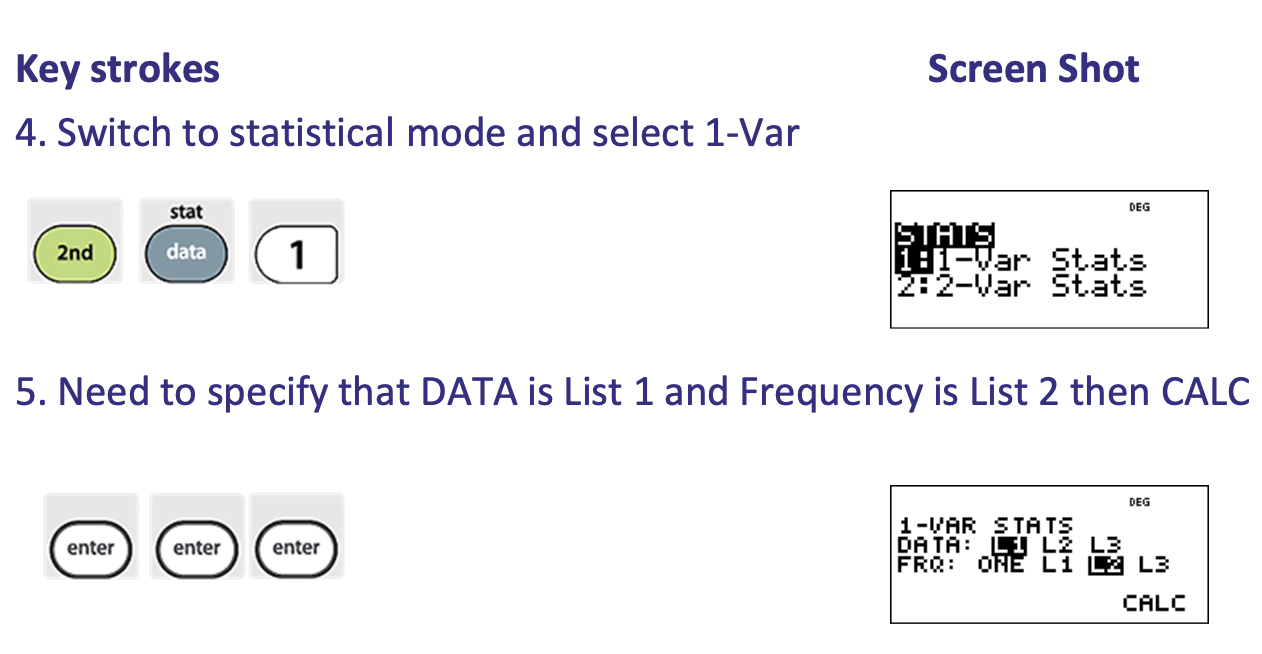
What is step 4 of calculating Standard Deviation (of a Frequency Distribution)
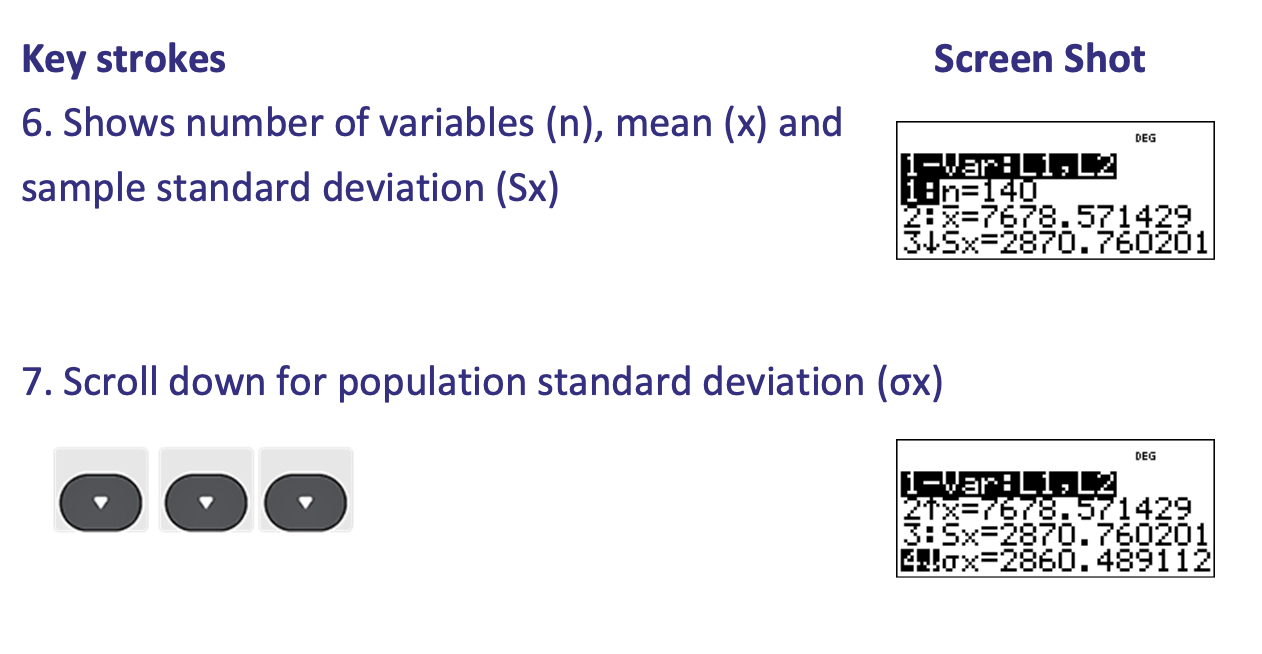
What is a Range
Difference between the highest and lowest values in a data set
What is Interquartile Range
Represents the ‘middle 50%’ of a data set
Difference between the 1st and 3rd quartiles
What is 1st Quartile defined as
Mid-point between the lowest value and the median
What is 2nd Quartile defined as
The median
What is 3rd Quartile defined as
Mid-point between the median and the highest value
Where is the mean in a normal distribution
At the centre
What does it mean that a normal distribution is perfectly symmetrical
50% of observations on each side of the mean
How many observations are within one standard deviation of each side of the mean
~ 2/3rds
How many observations are within two standard deviation of each side of the mean
~ 95%
How is the shape of a normal distribution curve determined
By the Mean and Standard Deviation
What is the relationship between Mean, Median and Mode in a positively skewed frequency distribution
Mode <Median < Mean
What is the relationship between Mean, Median and Mode in a negatively skewed frequency distribution
Mean <Median < Mode
What is Regression/ Least-Squares/ Correlation analysis
The derivation of an equation in which one of the variables (the dependent variable, Y) can be estimated from other variables (the independent variables, X
What does the Least-Square method create
A simple ‘regression line’ (linear bivariate regression line
Y = a + bX
How is the line derived in the Least-Square method
Minimises the sum of the squared errors
What are the uses of the Least-Squares method
Extrapolation: forecast values OUTSIDE the range of the sample
Interpolation: filling in values missing WITHIN
the range
What does it mean if values are correlated
Values that increase/decrease together are positively correlated
Values that diverge are negatively correlated
What is correlation co-efficient
How well a linear bivariate regression line summarises the data
A measure of how closely related two variants are
What is the formula for correlation co-efficient

Example of how simple arithmetic indices are constructed
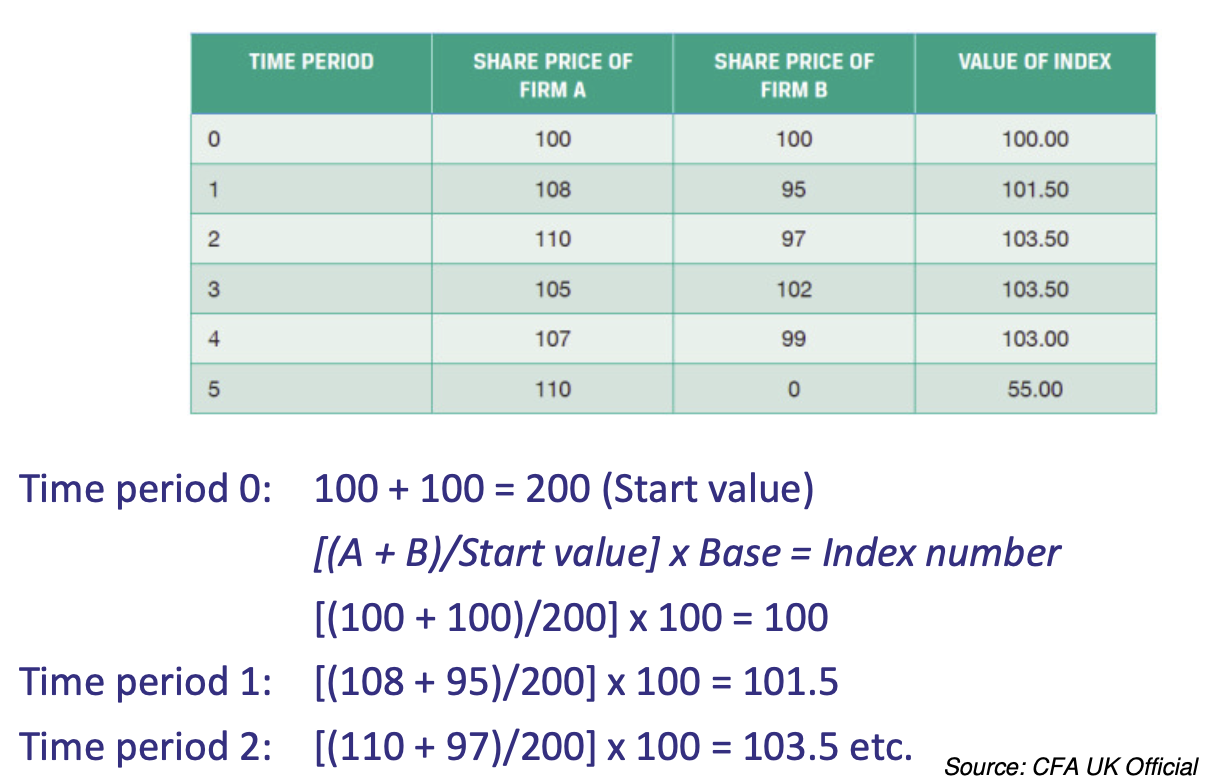
Example of how simple arithmetic indices can be rebased in a following time period
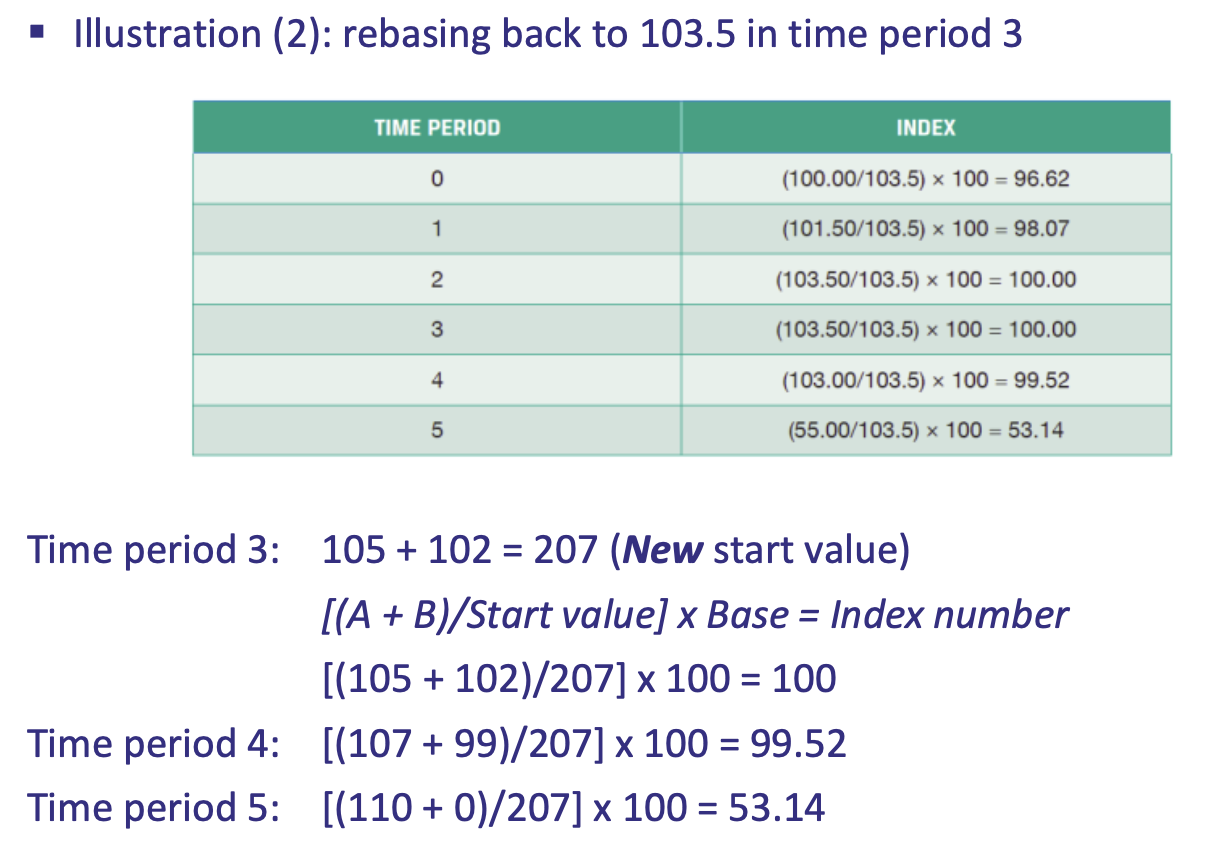
What are the features of Geometric Indices
Less sensitive to changes in the price of constituents
Capital changes easy to accommodate
What is an example of a geometric index
Financial Times Ordinary Share Index (FT30)
What are the problems of Equally Weighted Indices (Why use Market Weighted Indices)
Give too much/little weight to companies, i.e. they are NOT REPRESENTATIVE of a whole market
Example of how Equally Weighted Indices are constructed
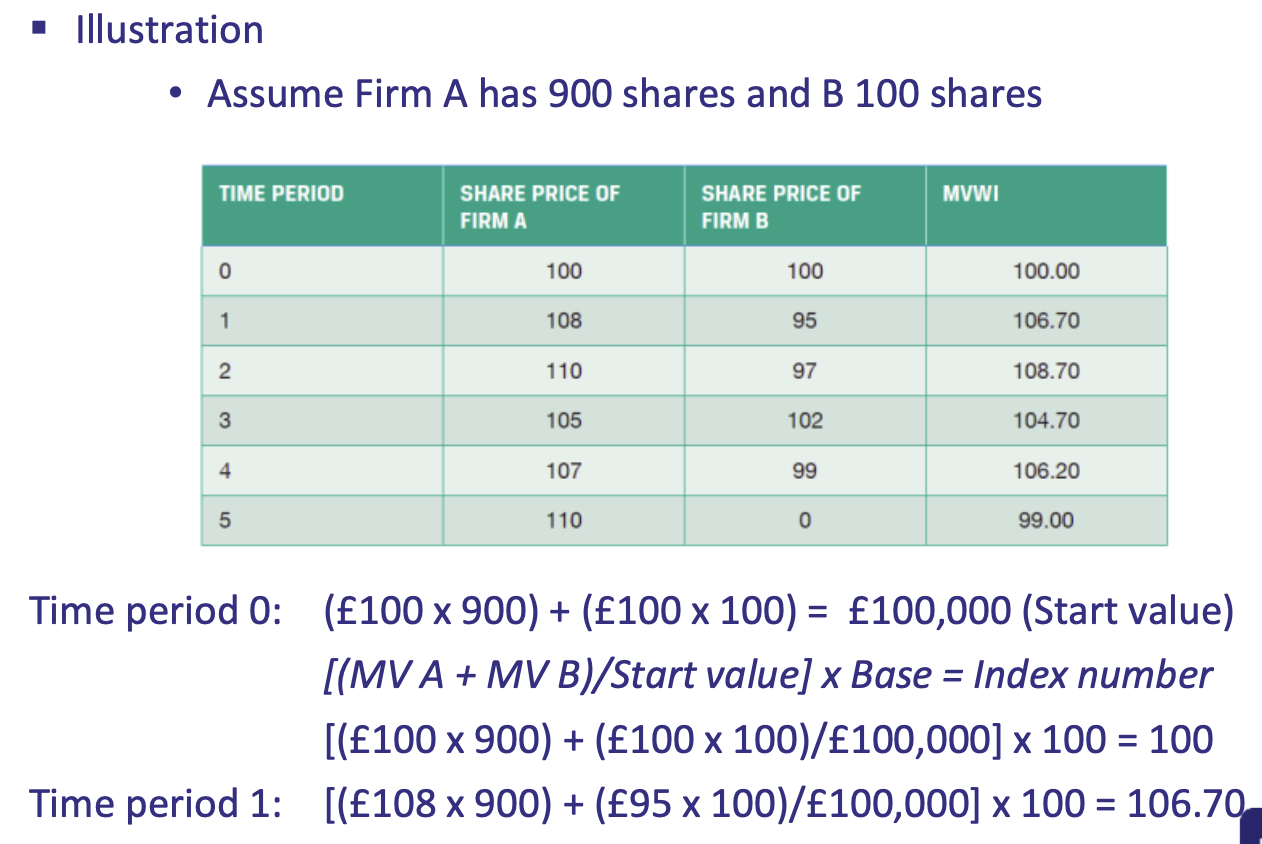
What are some key UK equity market indices
FTSE100
• 100 largest UK companies
• Captures 70% of the value of UK listed shares
FTSE250
• The NEXT most valuable 250 UK companies (‘mid-cap stocks’)
FTSE All-Share
• Covers 98% of the UK stock market capitalisation
FT30
• Oldest UK index (set at 100pts in 1935)
What are some key US equity market indices
Dow Jones Industrial Average
• 30 largest industrial stocks on the NYSE and NASDAQ
• Calculation: unweighted arithmetic mean
Standard & Poor’s (S&P) 500
• 500 largest US companies
What is a German Key index
DAX
What is a Japan Key index
Nikkei 225
How is the Nikkei 225 calculated
unweighted arithmetic mean
What is the formula for Effective Annual Rate (EAR) Or Annual Percentage Rate (APR)
Where:
‘r’ = relevant periodic flat rate/number of periods
‘n’ = number of periods over which ‘r’ is compounded

How is Future Value calculated

How is Present Value calculated
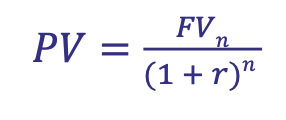
How are Annuities calculated

How are Perpetuities calculated
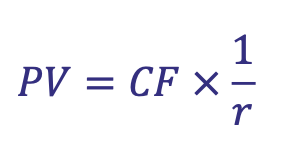
What is Net Present Value (NPV)
The present value of inflows less the present value of the outflows
What is Internal Rate of Return (IRR)
The discount rate that makes the present value of the inflows equal to the present value of the outflows (i.e. net present value of zero)
What is the Production Possibility Frontier
Describes the maximum quantities of goods produced using all available resources in an economy
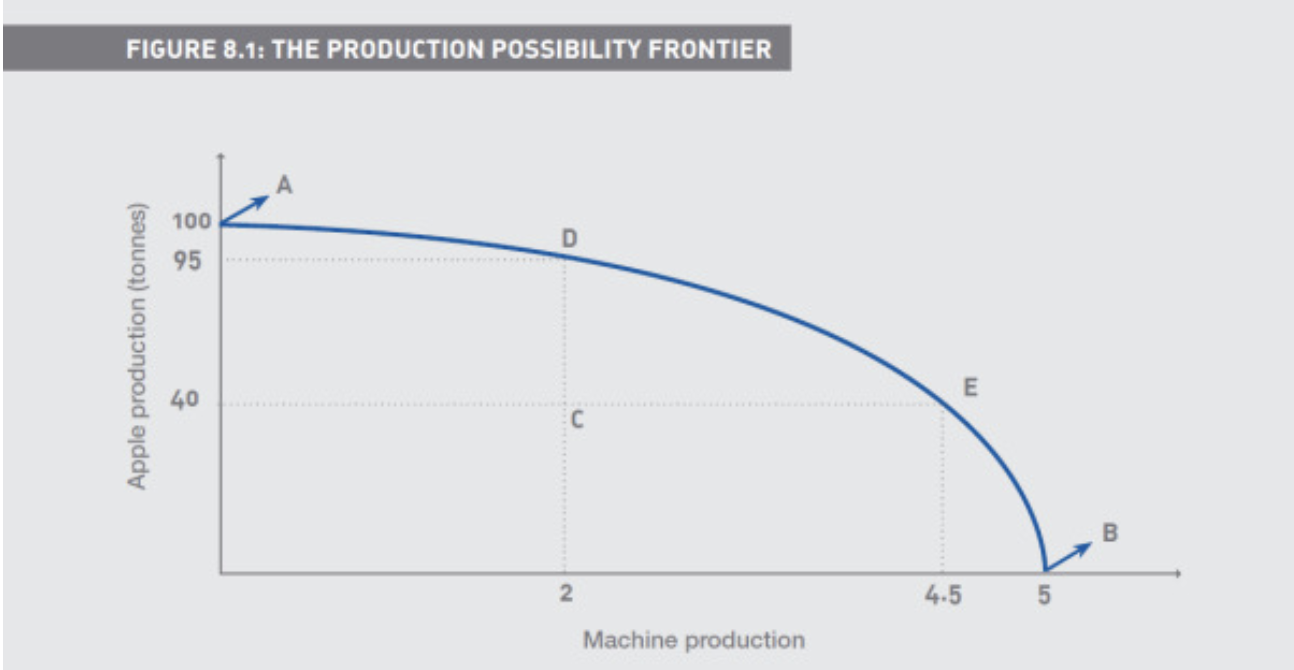
What are the inputs in the Production Possibility Frontier
Labour
Land
Capital
What are factors affecting demand
• Complementary goods
• Substitute goods
• Consumer income
• Tastes
• Advertising
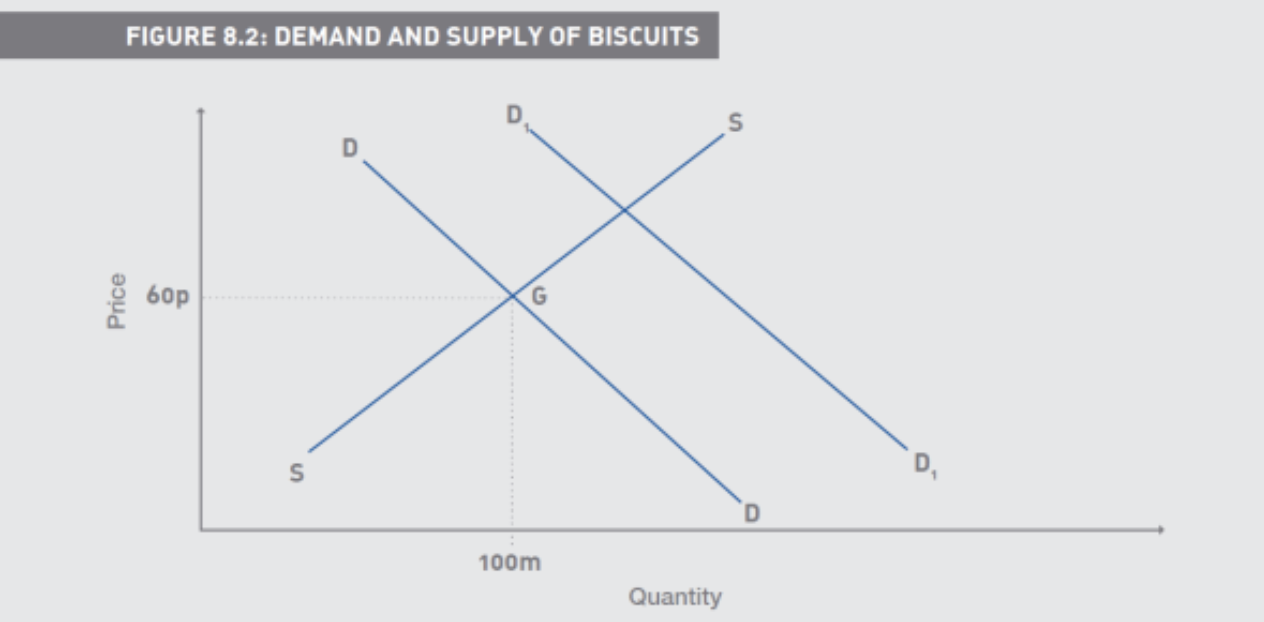
What does Price elasticity of Demand greater than one mean
Elastic demand
What does Price elasticity of Demand less than one mean
Inelastic demand
What does Price elasticity of Demand cause
Shift ALONG the curve
What is the formula for PED
(% change in quantity demanded)/(% change in price)
What is the elasticity of demand under perfect competition?
Infinity
What does positive Cross elasticity of Demand imply
substitute goods
What does negative Cross elasticity of Demand imply
complimentary goods
What does Cross elasticity of Demand cause
Shift IN the curve
What does a positive Income elasticity of Demand imply
normal goods
What does a Income elasticity of Demand greater than 1 imply
luxury goods
What does a negative Income elasticity of Demand imply
inferior goods (necessities)
What does Income elasticity of Demand cause
Shift IN the curve
What is Supernormal profit (Economic Profit)
Profit in excess of
• Measured costs
• Opportunity costs
Economic profit is calculated as:
Accounting profit minus the cost of the entrepreneur's time and capital
How do companies profit maximise
Firms will produce output until the level is reached where marginal cost and marginal revenue are equal
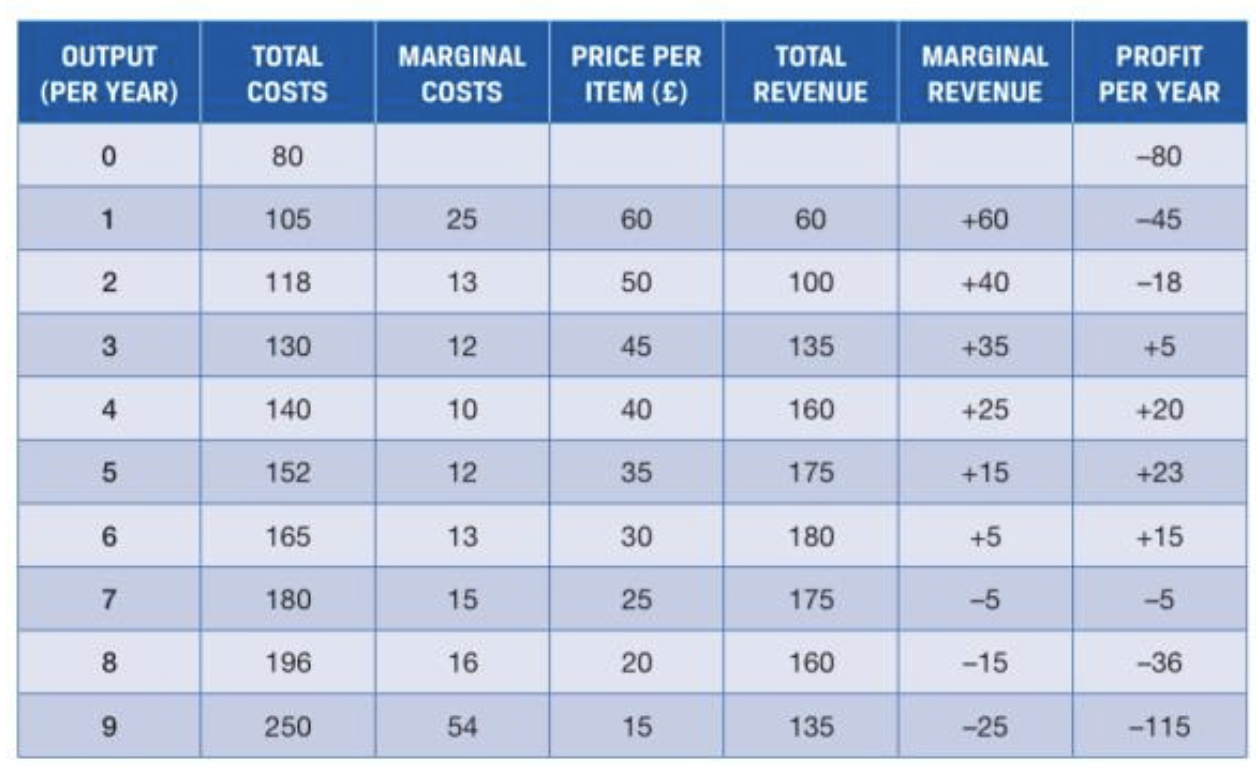
What is Economies of Scale
An lncrease inputs leads to a more than proportionate increase in output
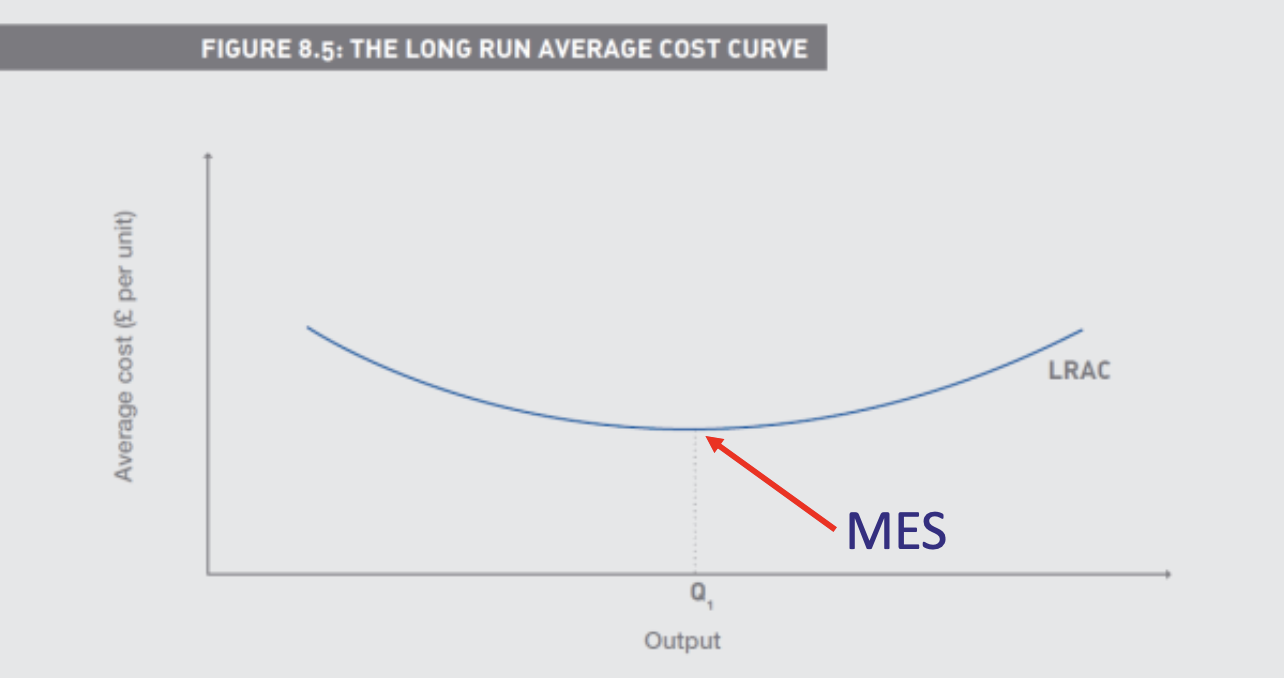
What is the bottom of the Long Run average cost curve
The minimum efficient scale
Where is a firm’s optimal output
Q1 is optimal output
A is where MR = MC,
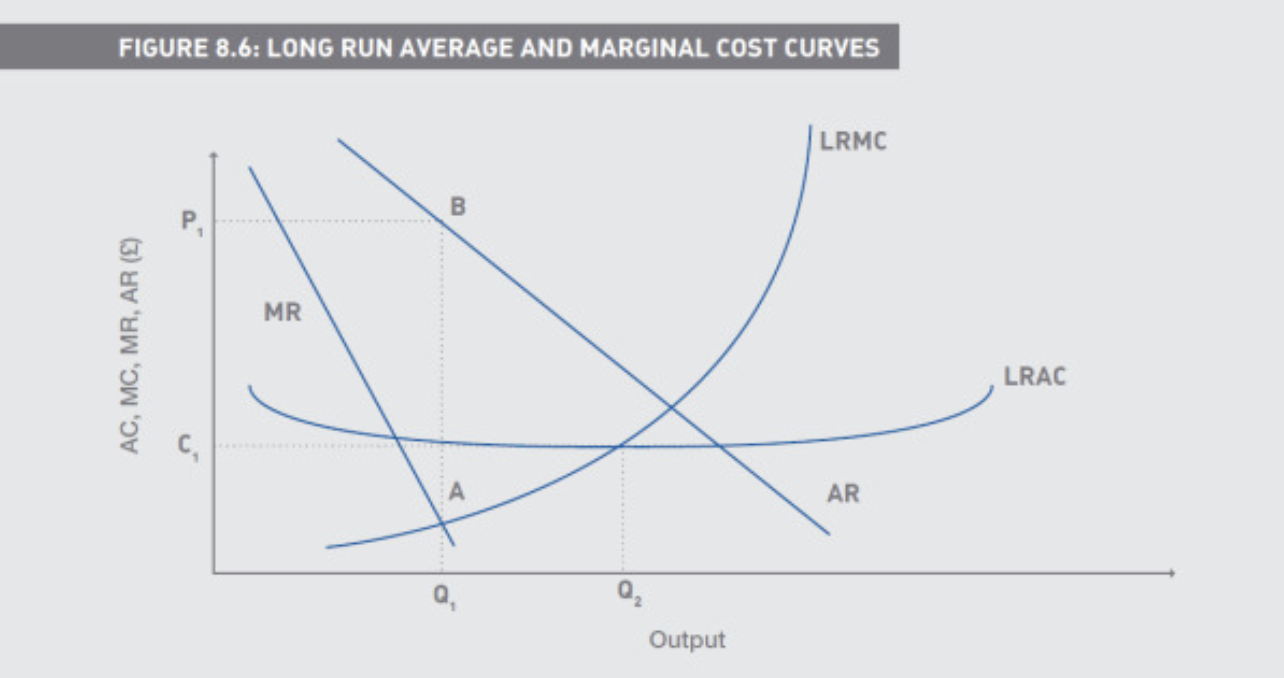
Where does a firm begin to experience diseconomies of scale
Q2
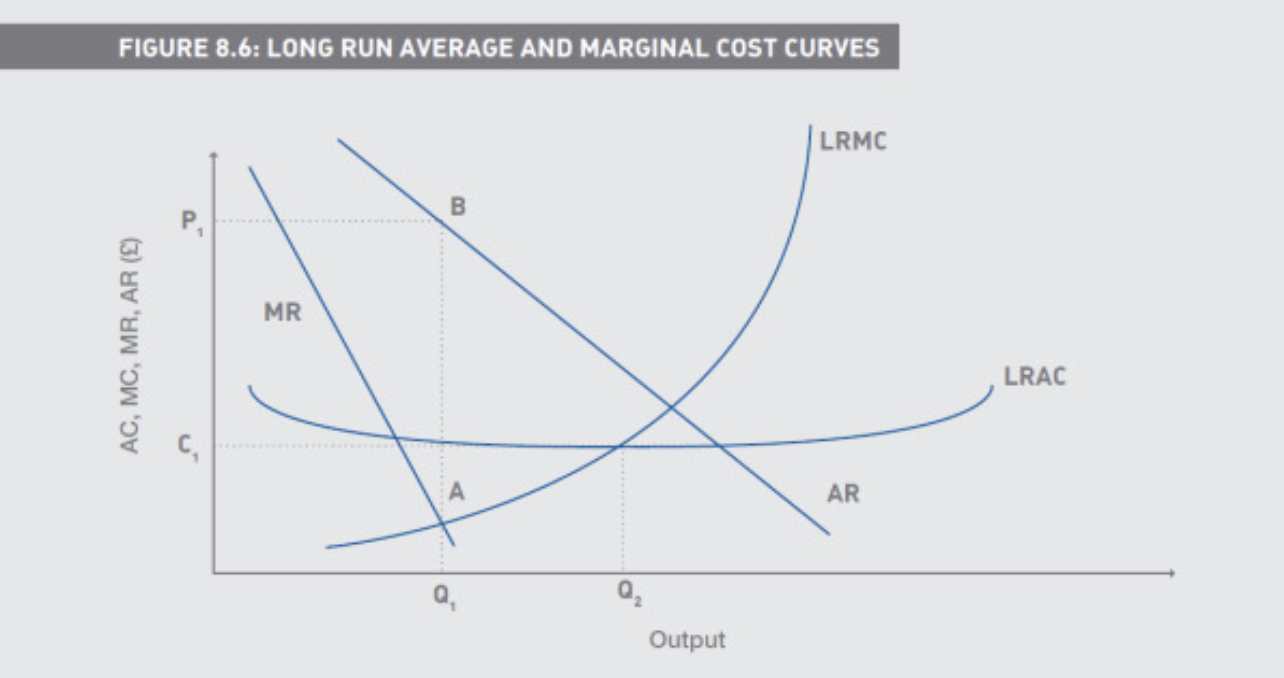
What is perfect competition
A market structure in which neither buyers nor sellers believe that they can influence the market price by any actions of their own Horizontal demand line (AR)
How do Buyers and Sellers view themselves in Perfect Competition
as Pricetakers
What are the characteristics of Perfect Competition
Homogeneous product
Large number of independent firms, each small relative to
Industry size
No barriers to entry or exit
Perfect information
Where is MR and AR in the short run in perfect competition
Equal to price
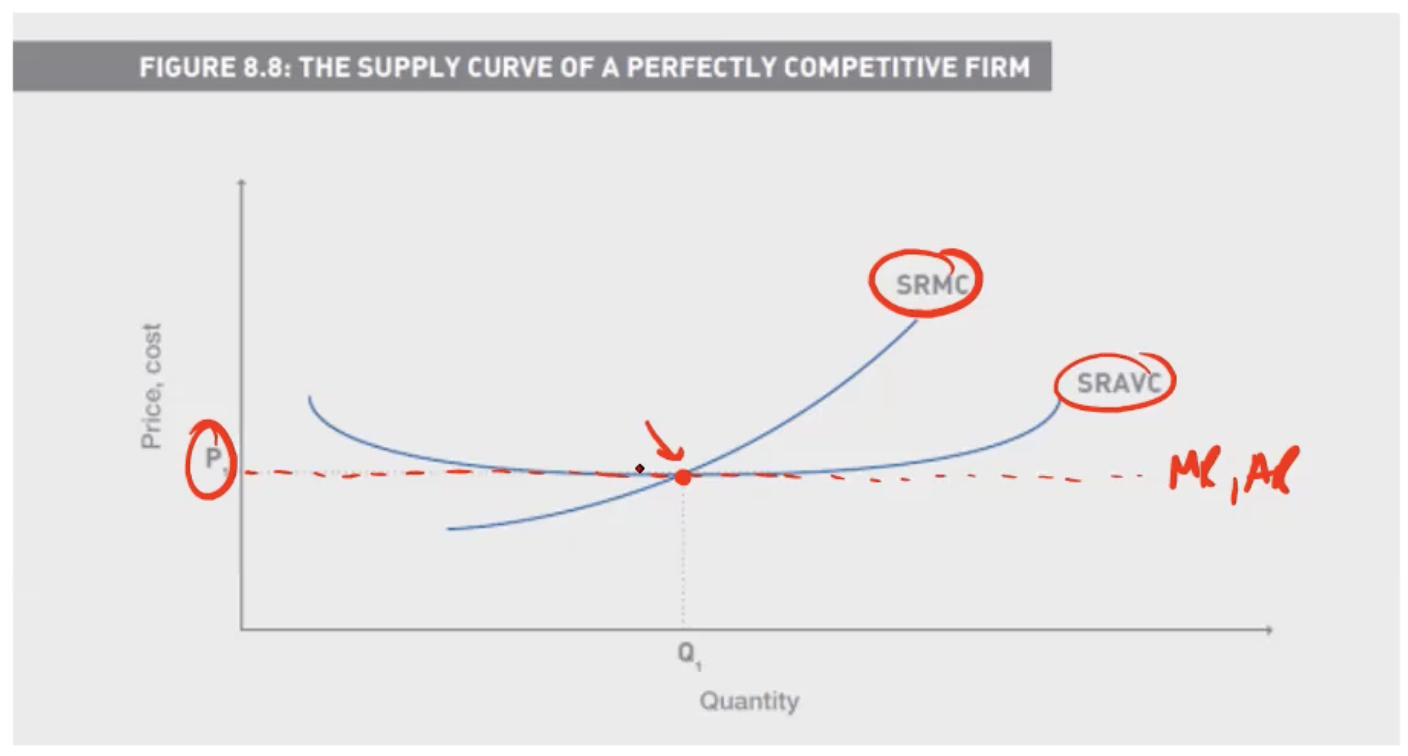
In the Short Run how does a firm in perfect competition decide whether to continue operating
We equate MR with SRMC, and check to see if this intersection is above the SRAVC curve

Why must Revenue be above Variable cost in perfect competition
A firm will only stay in business in the short run if it can at least cover its variable costs.
Where is MR and AR in the long run in perfect competition
Equal to Price
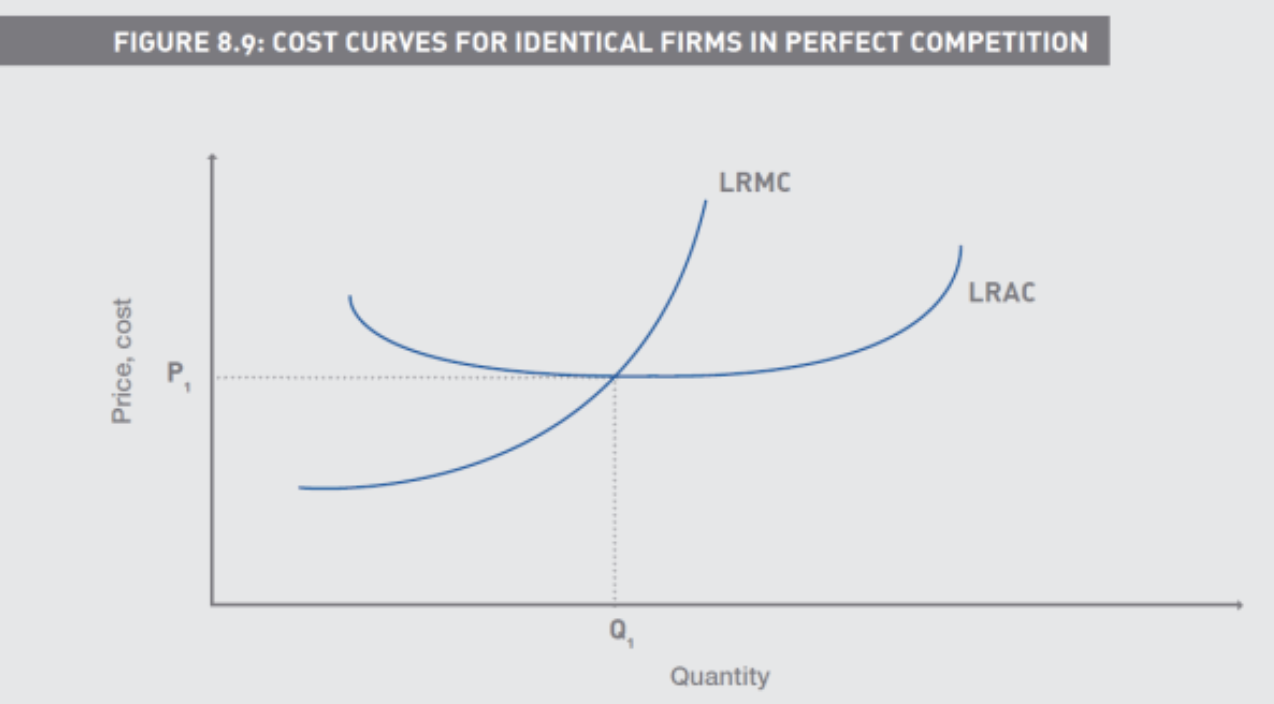
In the Long Run how does a firm in perfect competition decide whether to continue operating
If AR is below LRATC
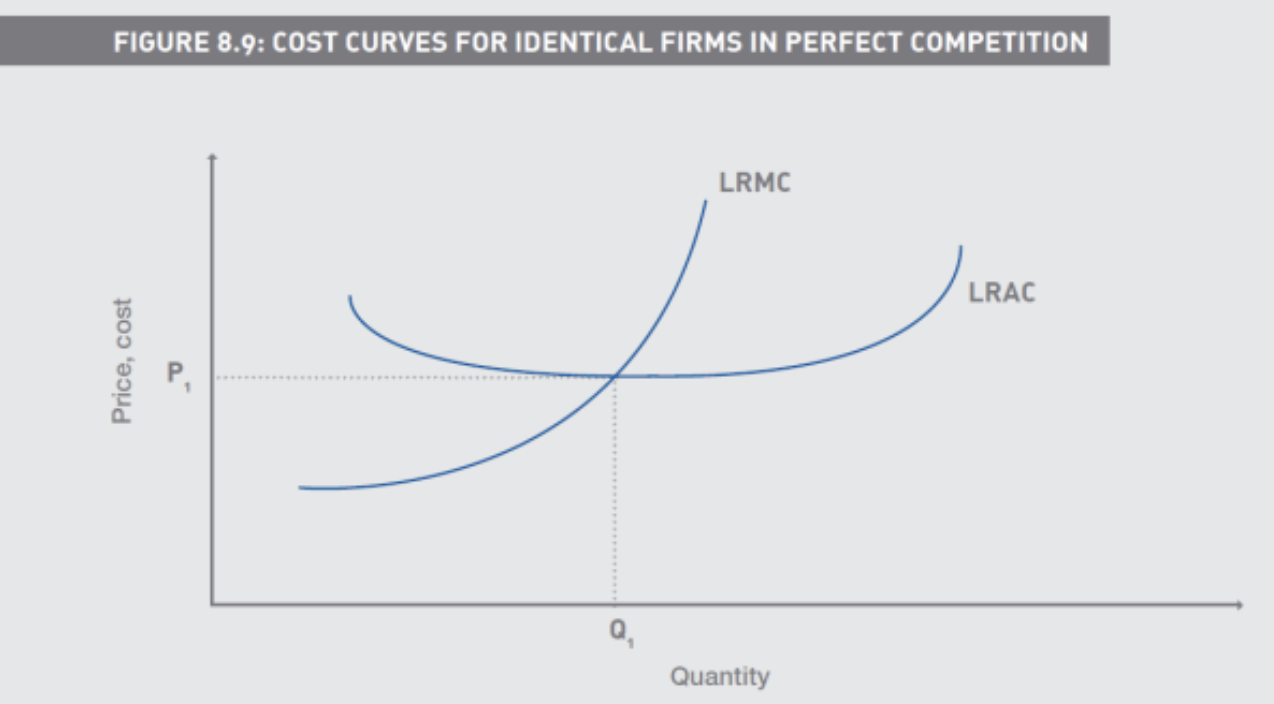
What are features of a Pure Monopoly
A single supplier
Patents/Licenses
• Supernormal (or monopolistic) profits are sustainable in the long run
Price discrimination
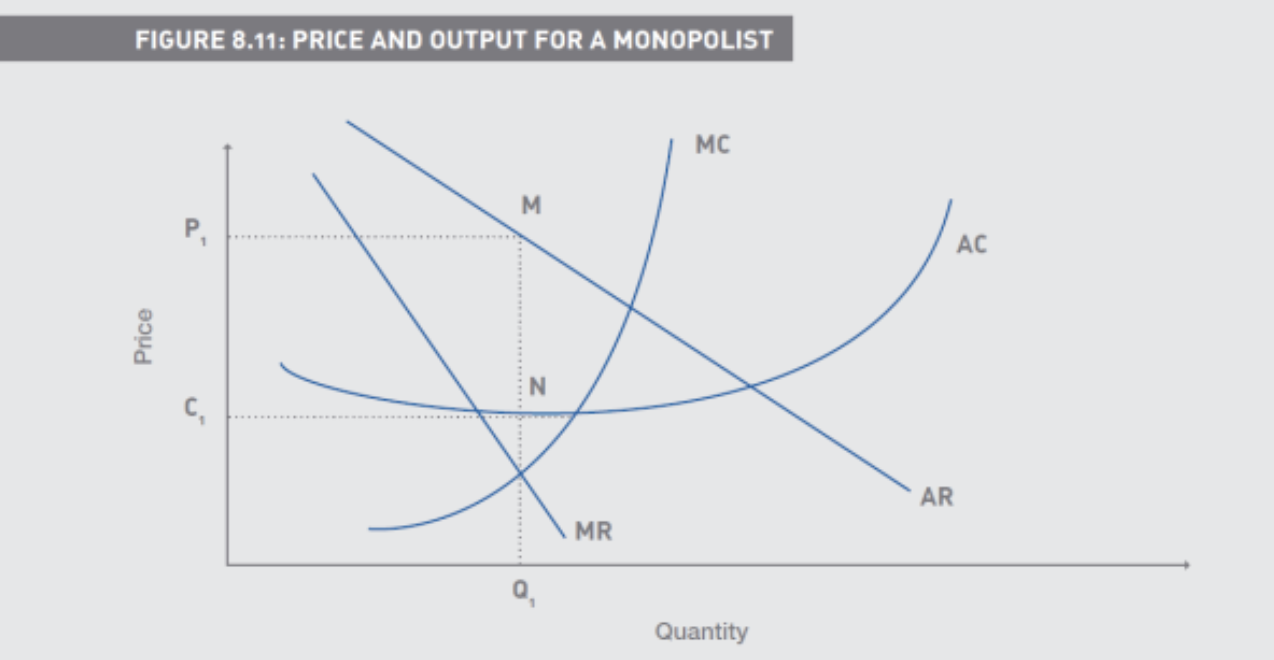
Why are supernormal profits sustainable in a monopoly but not in perfect competition
With no barriers to entry, firms not in the industry would enter, supply would increase and profits would fall
Where is price set for perfect competition firms in this graph
Where Demand intersects Supply producing Q1
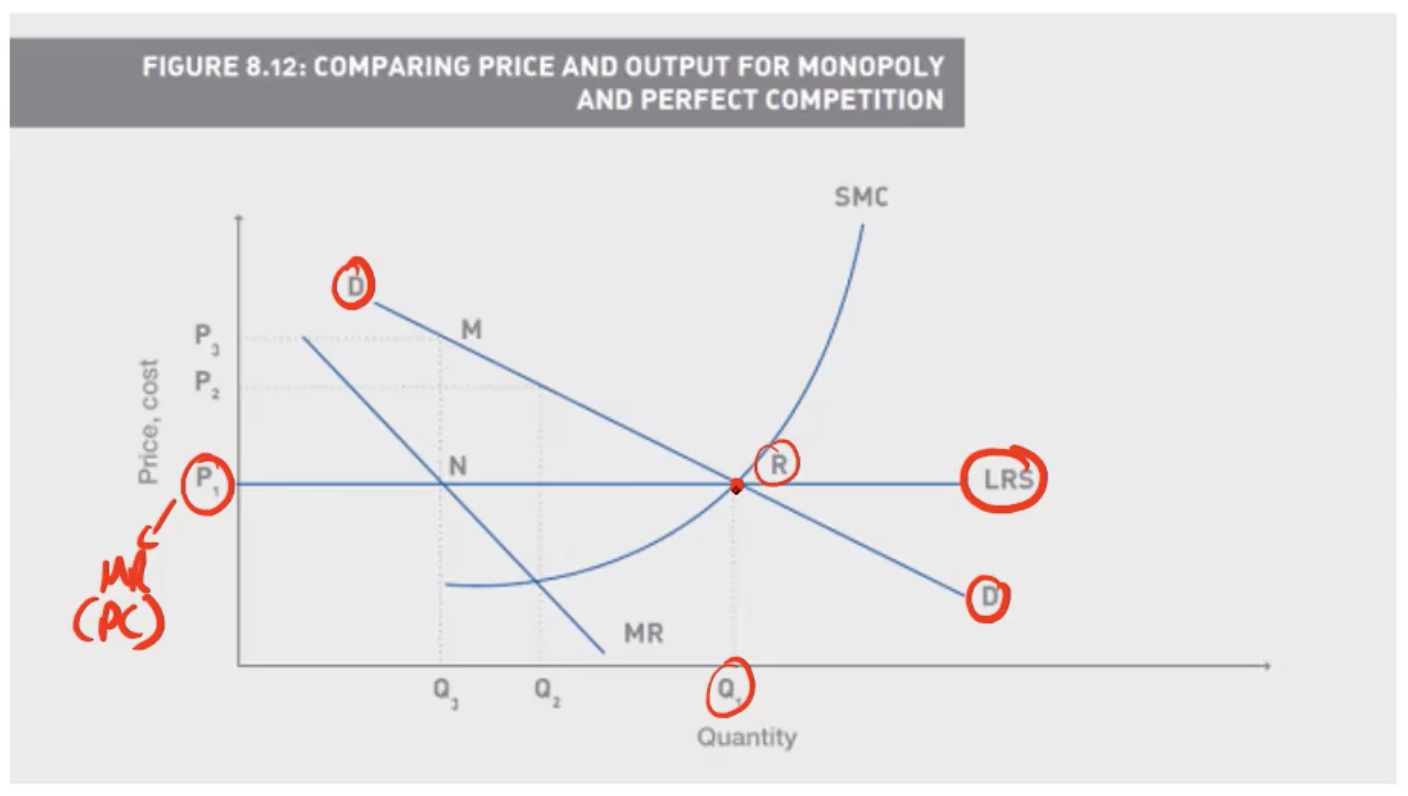
In the Short Run where does the monopoly produce in this graph
MR = SMC (Short Run Supply)
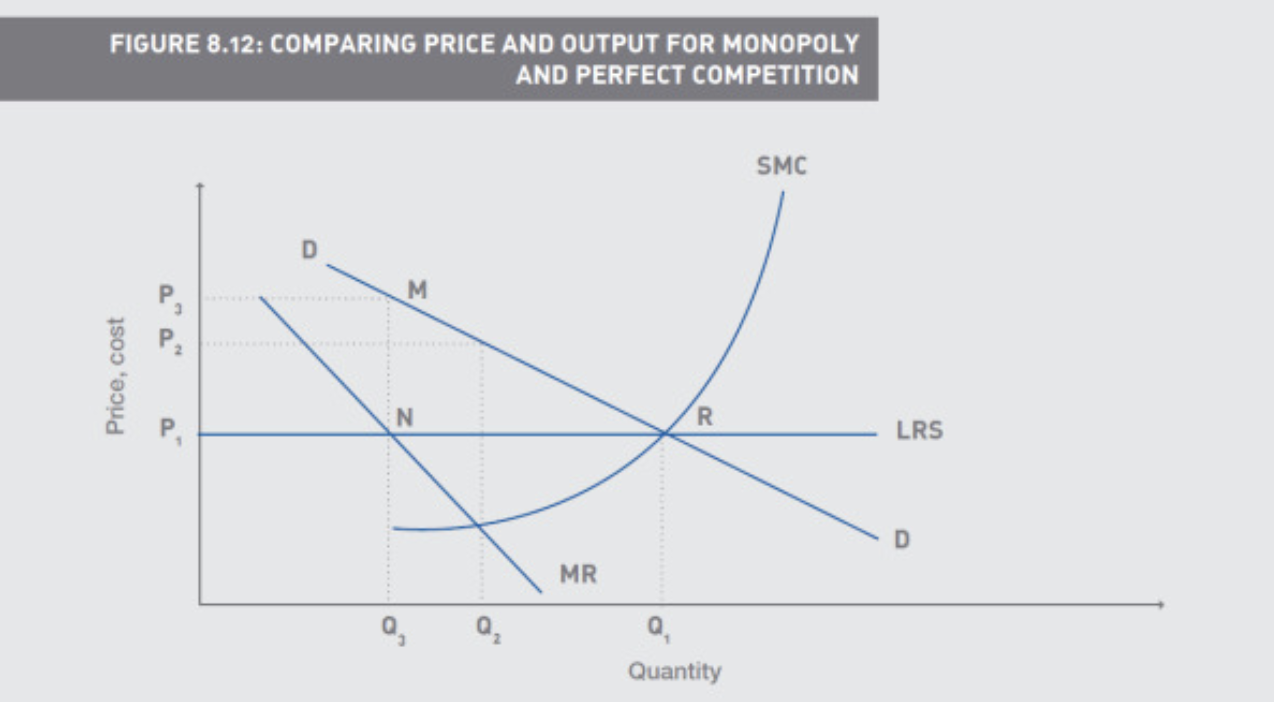
In the Long Run where does the monopoly produce in this graph
MR = LRS (Long Run Supply)
Shows a monopolist may produce less at a higher price
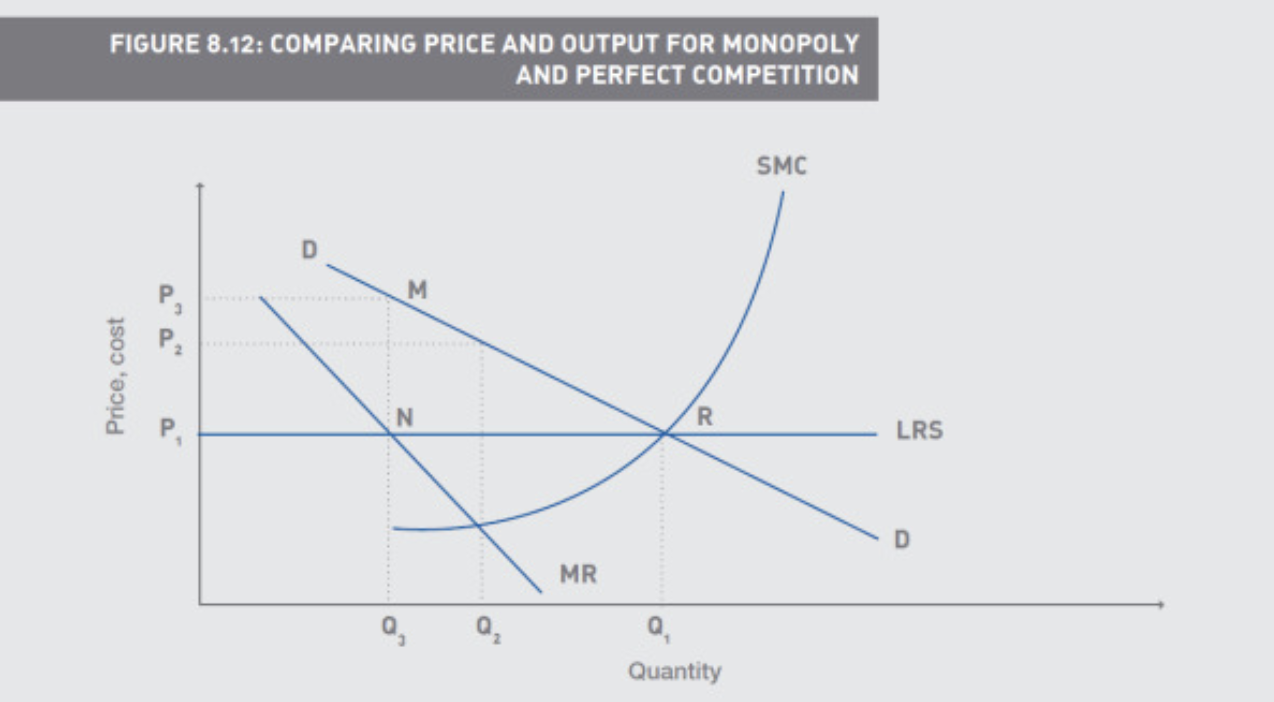
What are the features of Monopolisitc Competition and Oligopolies
Relative few firms
Significant barriers to entry
Homogeneous products
Why is the demand curve kinked
Because if one firm changes their price others are assumed to follow suit
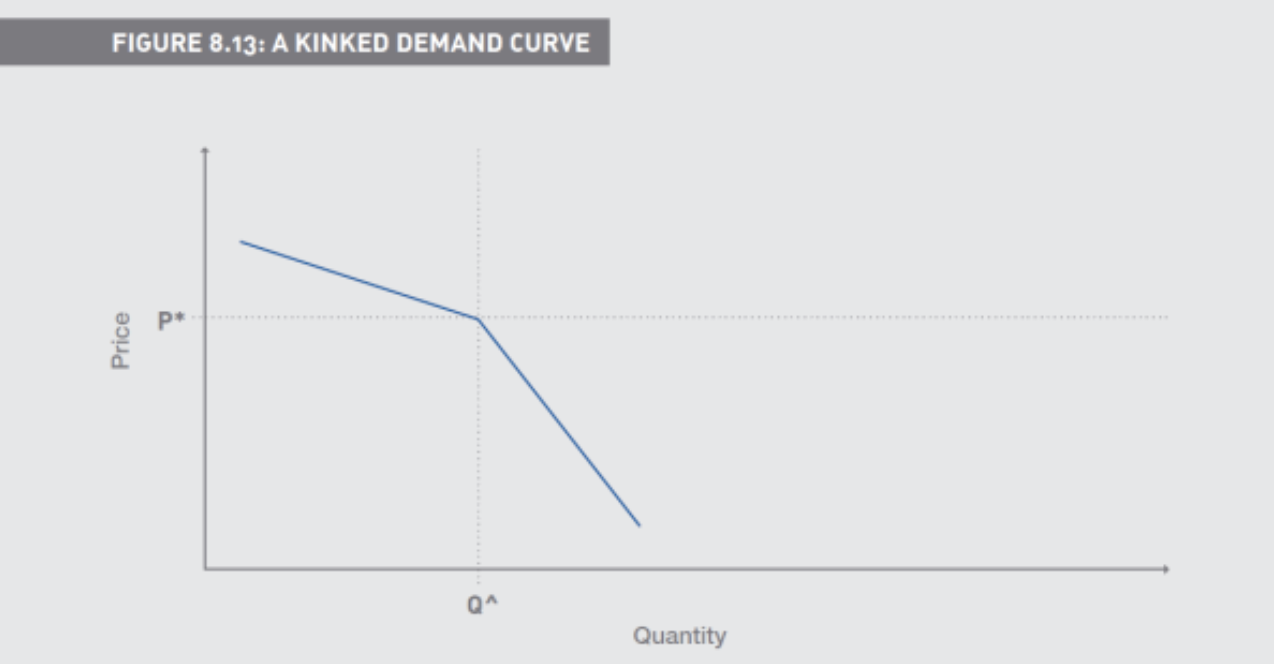
How do business cycles and Industry performance trend over time
Business Cycle lags the Stock Market
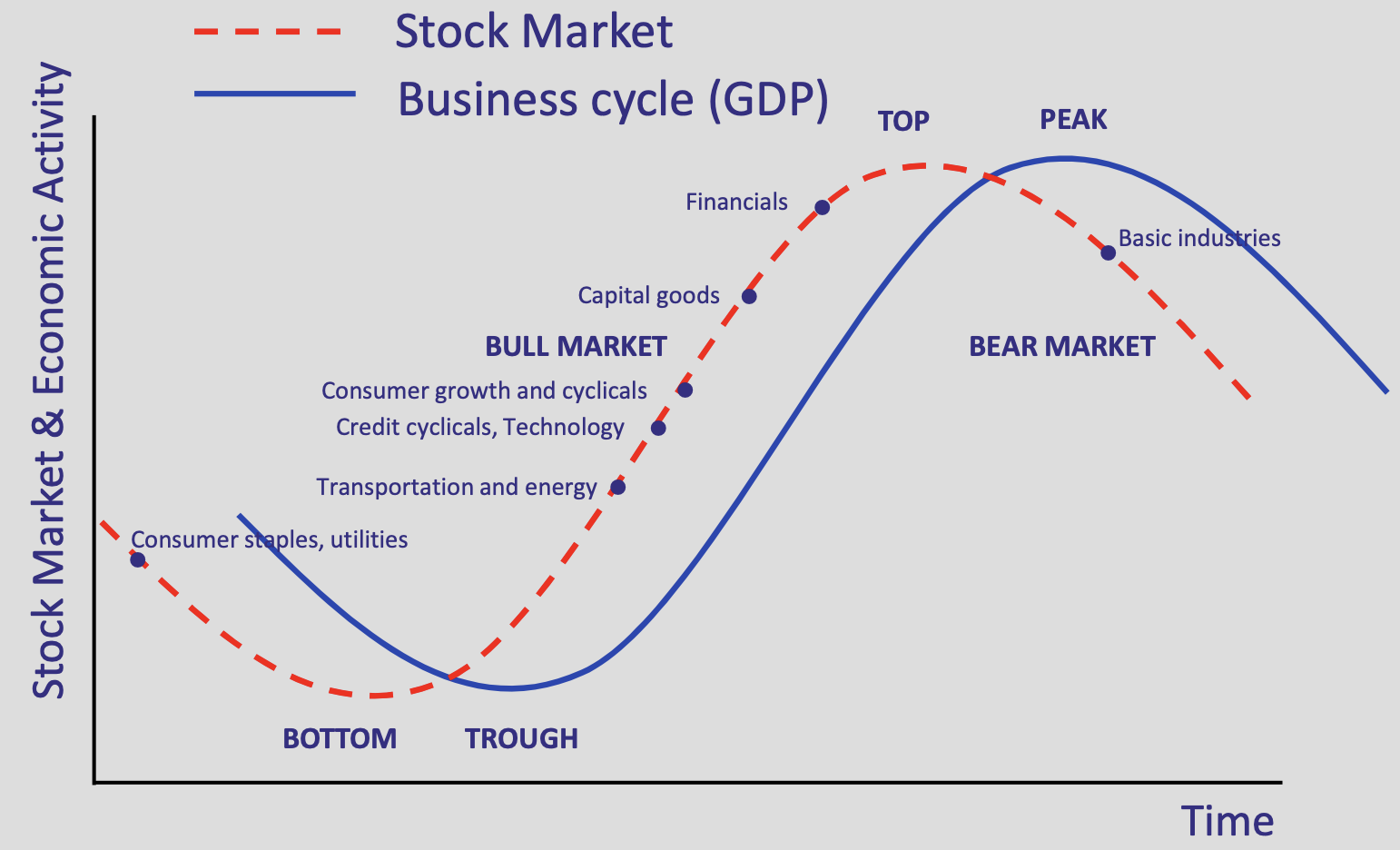
What are Porter’s Five Competitive Forces
Power of suppliers
Power of the buyers
Threat of new entrants
Threat of substitutes
Competition
What are the 5 phases of the product life cycle
Introduction
Growth
Mature
Decline
Obsolescence
What happens in the Introduction Phase
Sales growing slowly
High promotion cost
Low or negative profits
What happens in the Growth Phase
Rapid increase in sales
Profits rise
Competitors attracted
What happens in the Mature Phase
Product is established
Promotional spending falls
Economies of scale
Competitors hence product innovation is required